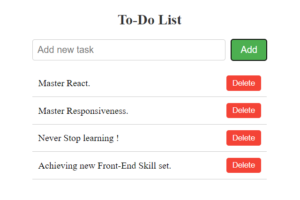Java Full Stack applications can be susceptible to various security vulnerabilities if not properly designed and implemented. Understanding these vulnerabilities is crucial for building secure applications. Here are some common security vulnerabilities in Java Full Stack applications:
- Cross-Site Scripting (XSS):
XSS vulnerabilities occur when untrusted data is improperly included in web pages, allowing attackers to inject malicious scripts. This can lead to session hijacking, cookie theft, or unauthorized actions on behalf of users. - SQL Injection:
SQL injection vulnerabilities occur when user-supplied data is not properly sanitized or validated before being used in SQL queries. Attackers can manipulate the input to execute arbitrary SQL commands, potentially gaining unauthorized access to the database or modifying data. - Cross-Site Request Forgery (CSRF):
CSRF vulnerabilities occur when an attacker tricks a user into performing unintended actions on a web application without their consent. This is usually achieved by exploiting the trust between the user’s browser and the application, leading to unauthorized actions. - Server-Side Request Forgery (SSRF):
SSRF vulnerabilities occur when an attacker can make a server-side application send arbitrary requests to other internal or external systems. This can result in information disclosure, data theft, or unauthorized access to internal resources. - Insecure Direct Object References (IDOR):
IDOR vulnerabilities occur when an application exposes direct references to internal objects or resources without proper access controls. Attackers can manipulate these references to access unauthorized data or perform unintended actions. - Authentication and Session Management Issues:
Weak authentication mechanisms, session management flaws, or improper handling of authentication-related information can lead to unauthorized access, session hijacking, or session fixation attacks. - Insecure Deserialization:
Insecure deserialization vulnerabilities occur when untrusted data is deserialized without proper validation and can lead to remote code execution, denial of service, or other attacks. - Inadequate Access Controls:
Insufficient or improperly enforced access controls can allow unauthorized users to access restricted functionality or sensitive data. This includes improper authorization checks, privilege escalation, or bypassing of access controls. - Information Leakage:
Information leakage vulnerabilities occur when an application unintentionally exposes sensitive information, such as error messages, stack traces, or configuration details. Attackers can use this information to gain insights into the application’s infrastructure and potentially exploit vulnerabilities. - Insecure File Uploads:
Insecure file upload vulnerabilities occur when files uploaded by users are not properly validated or sanitized. This can lead to the execution of malicious code, denial of service, or unauthorized access to the server’s file system.
To mitigate these vulnerabilities, it is crucial to follow secure coding practices, such as input validation and sanitization, output encoding, parameterized queries, and implementing proper access controls. Additionally, keeping libraries and frameworks up to date, enforcing strong authentication and authorization mechanisms, and regularly performing security testing and code reviews can help identify and address potential vulnerabilities in Java Full Stack applications.




